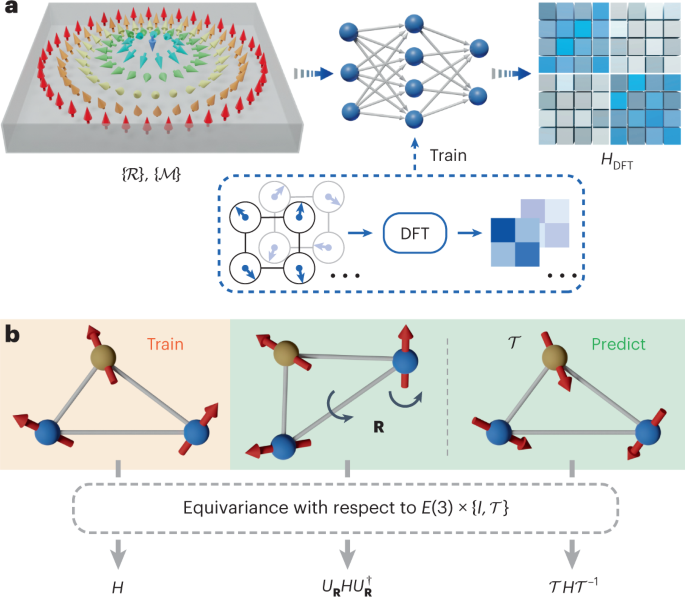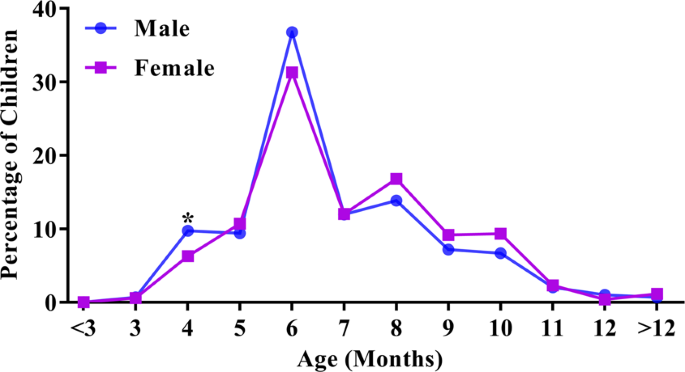
- Select a language for the TTS:
- UK English Female
- UK English Male
- US English Female
- US English Male
- Australian Female
- Australian Male
- Language selected: (auto detect) - EN
Play all audios:
A rotational and time-reversal equivariant neural network designed to represent the spin–orbital density functional theory Hamiltonian as a function of the atomic and magnetic structure
enables ab initio electronic-structure calculations of magnetic superstructures. These calculations can efficiently and accurately predict subtle magnetic effects in various chemical
environments. Access through your institution Buy or subscribe This is a preview of subscription content, access via your institution ACCESS OPTIONS Access through your institution Access
Nature and 54 other Nature Portfolio journals Get Nature+, our best-value online-access subscription $32.99 / 30 days cancel any time Learn more Subscribe to this journal Receive 12 digital
issues and online access to articles $99.00 per year only $8.25 per issue Learn more Buy this article * Purchase on SpringerLink * Instant access to full article PDF Buy now Prices may be
subject to local taxes which are calculated during checkout ADDITIONAL ACCESS OPTIONS: * Log in * Learn about institutional subscriptions * Read our FAQs * Contact customer support
REFERENCES * Nagaosa, N. & Tokura, Y. Topological properties and dynamics of magnetic skyrmions. _Nat. Nanotechnol._ 8, 899–911 (2013). A REVIEW ARTICLE THAT PRESENTS THE PROPERTIES AND
POTENTIAL APPLICATIONS OF MAGNETIC SKYRMIONS. Article Google Scholar * Kulik, H. K. et al. Roadmap on machine learning in electronic structure. _Electron. Struct._ 4, 023004 (2022). A
REVIEW ARTICLE THAT PRESENTS KEY DEVELOPMENTS IN THE USE OF MACHINE LEARNING APPROACHES FOR ELECTRONIC-STRUCTURE CALCULATIONS AND MATERIALS SCIENCE. Article Google Scholar * Li, H. et al.
Deep-learning density functional theory Hamiltonian for efficient ab initio electronic-structure calculation. _Nat. Comput. Sci._ 2, 367–377 (2022). AN ARTICLE THAT INTRODUCES A
DEEP-LEARNING APPROACH THAT IS USED TO EFFICIENTLY STUDY THE ELECTRONIC STRUCTURES OF NON-MAGNETIC MATERIALS. Article Google Scholar * Gong, X. et al. General framework for
E(3)-equivariant neural network representation of density functional theory Hamiltonian. Preprint at https://arxiv.org/abs/2210.13955 (2022). A PREPRINT ARTICLE THAT PROPOSES A GENERAL
DEEP-LEARNING FRAMEWORK TO REPRESENT THE DFT HAMILTONIAN USING ENNS. Download references ADDITIONAL INFORMATION PUBLISHER’S NOTE Springer Nature remains neutral with regard to jurisdictional
claims in published maps and institutional affiliations. THIS IS A SUMMARY OF: Li, H. et al. Deep-learning electronic-structure calculation of magnetic superstructures. _Nat. Comput. Sci_.
https://doi.org/10.1038/s43588-023-00424-3 (2023). RIGHTS AND PERMISSIONS Reprints and permissions ABOUT THIS ARTICLE CITE THIS ARTICLE A deep-learning method for studying magnetic
superstructures. _Nat Comput Sci_ 3, 287–288 (2023). https://doi.org/10.1038/s43588-023-00425-2 Download citation * Published: 26 April 2023 * Issue Date: April 2023 * DOI:
https://doi.org/10.1038/s43588-023-00425-2 SHARE THIS ARTICLE Anyone you share the following link with will be able to read this content: Get shareable link Sorry, a shareable link is not
currently available for this article. Copy to clipboard Provided by the Springer Nature SharedIt content-sharing initiative









